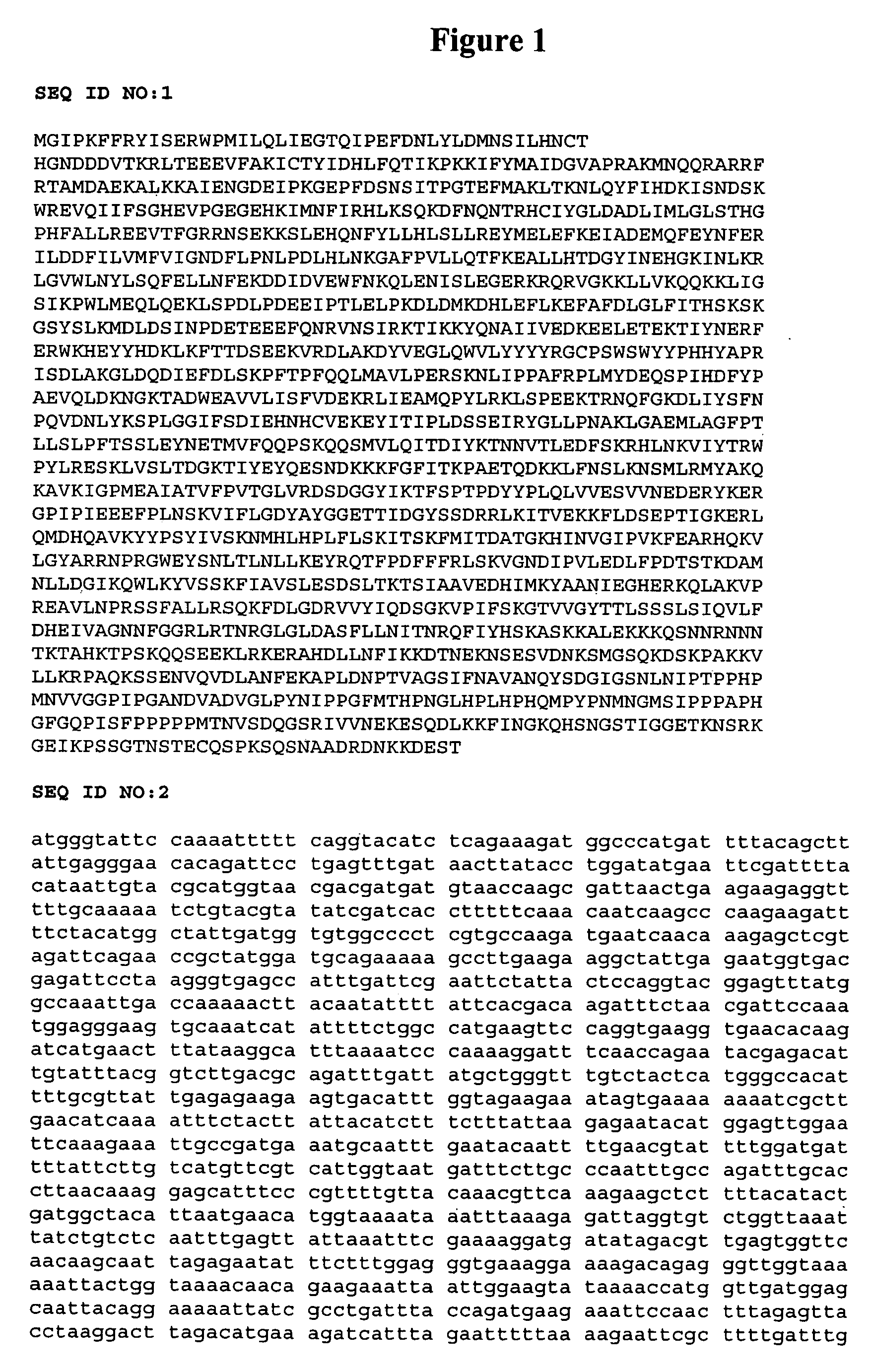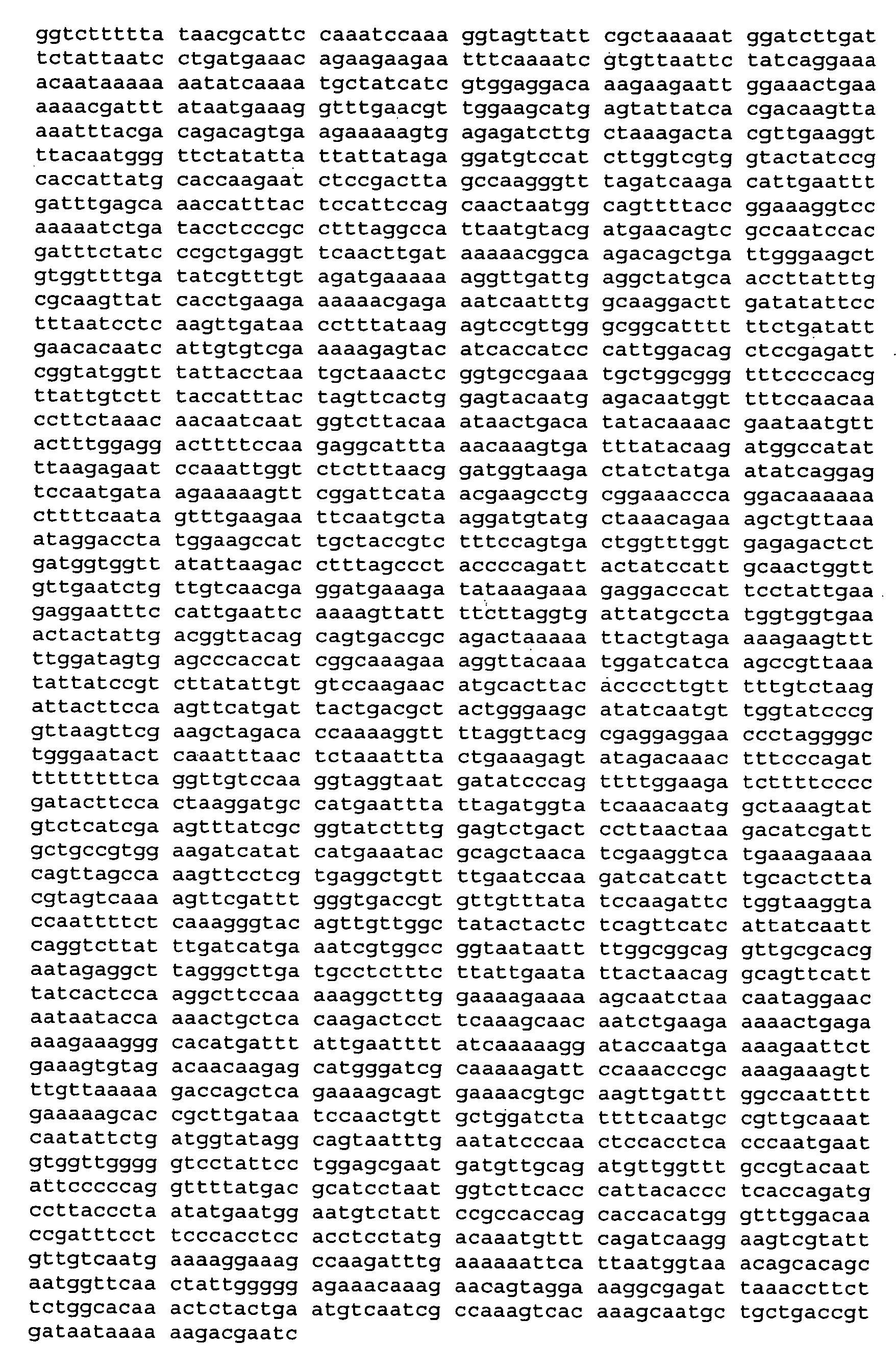Compositions and methods employing 5' phosphate-dependent nucleic acid exonucleases
a nucleic acid exonuclease and phosphate-dependent technology, applied in the field of compositions and methods employing 5′phosphate-dependent nucleic acid exonucleases, can solve the problems of insufficient solutions to problems, and difficult isolation of bacterial mrna, so as to improve various analyses involving mrna
- Summary
- Abstract
- Description
- Claims
- Application Information
AI Technical Summary
Benefits of technology
Problems solved by technology
Method used
Image
Examples
example 1
Activity of Exoribonuclease I
[0211] This Example describes the use of Exoribonuclease I in enriching for specific RNA substrates in the presence of other undesired nucleic acids.
A. Materials and Methods
[0212] Exoribonuclease I (xrn-1) (Stevens, Biochem. Biophys. Res. Commun. 81:656, 1978); Stevens, Biochem. Biophys. Res. Commun. 86:1126, 1979); Stevens, J. Biol. Chem 255:3080, 1980); and Stevens and Maupin, Nucleic Acids Res. 15:695, 1987) was purified from a recombinant source using methods similar to those described in the art. The enzyme was stored in 50% (v / v) glycerol containing, 0.05 M Tris-HCl (pH 7.5), 100 mM NaCl, 0.1 mM EDTA, 1 mM DTT, and 0.1% Triton X-100.
[0213] One unit of exoribonuclease I is the amount of enzyme that converts 1 μg of E. coli ribosomal RNA (comprising 16S and 23S rRNA) to acid-soluble form in 60 minutes at 30° C. under standard reaction assay conditions. Exoribonuclease I used in the experiments described herein is free of other detectabl...
example 2
Enrichment of Eukaryotic mRNA from Eukaryotic Total RNA for Use in cDNA Synthesis, RNA Amplification and Preparation of Labeled Target RNA for Gene Expression Analysis Using DNA Microarrays.
Sample Source and Nucleic Acid Samples
[0221] Cells from a mouse stem cell line that had been transformed with a gene linked to an inducible promoter were treated with the inducing substance and then grown in culture for either 6 days or 12 days following induction. Total RNA was then isolated from each 6-day and 12-day culture using methods known in the art, resulting in samples that were designated as the “6-day sample” and the “12-day sample,” respectively. Each RNA sample had prominent 18S and 28S rRNA peaks when they were analyzed using an Agilent 2100 bioanalyzer.
xrn-1 Treatment of 6-Day and 12-Day RNA Samples
[0222] The 6-day and 12-day RNA samples were each divided into two aliquots. The first aliquot was treated with xrn-1 exonuclease and the second aliquot was not treated with xrn-...
example 3
Preservation of Relative mRNA Abundance Levels after xrn-1 Exonuclease Treatment.
[0226] Two micrograms of human reference RNA and human skeletal muscle RNA were treated with 1 U of xrn-1 exonuclease for 1 hour at 30° C. The RNA was extracted and concentrated by ethanol precipitation and the entire sample was used in a 40 μl reverse transcription reaction using MMLV reverse transcriptase (EPICENTRE) with random nonamer primers at 37° C. for 1 hour. qPCR was performed using TAQURATE GREEN Real-time PCR MasterMix (EPICENTRE) and optimized concentrations of target-specific primers. The abundance of beta-2-microglobulin (B2M) in the samples was used for expression level normalization. The expression levels of six different target messages were analyzed. Duplicate cDNA and qPCR reactions were preformed, averaged, and normalized for each comparison. Simultaneous analysis was performed with normalization and test primers, and non-template controls were included. The difference in threshol...
PUM
| Property | Measurement | Unit |
|---|---|---|
| pH | aaaaa | aaaaa |
| pH | aaaaa | aaaaa |
| pH | aaaaa | aaaaa |
Abstract
Description
Claims
Application Information
 Login to View More
Login to View More - R&D
- Intellectual Property
- Life Sciences
- Materials
- Tech Scout
- Unparalleled Data Quality
- Higher Quality Content
- 60% Fewer Hallucinations
Browse by: Latest US Patents, China's latest patents, Technical Efficacy Thesaurus, Application Domain, Technology Topic, Popular Technical Reports.
© 2025 PatSnap. All rights reserved.Legal|Privacy policy|Modern Slavery Act Transparency Statement|Sitemap|About US| Contact US: help@patsnap.com



